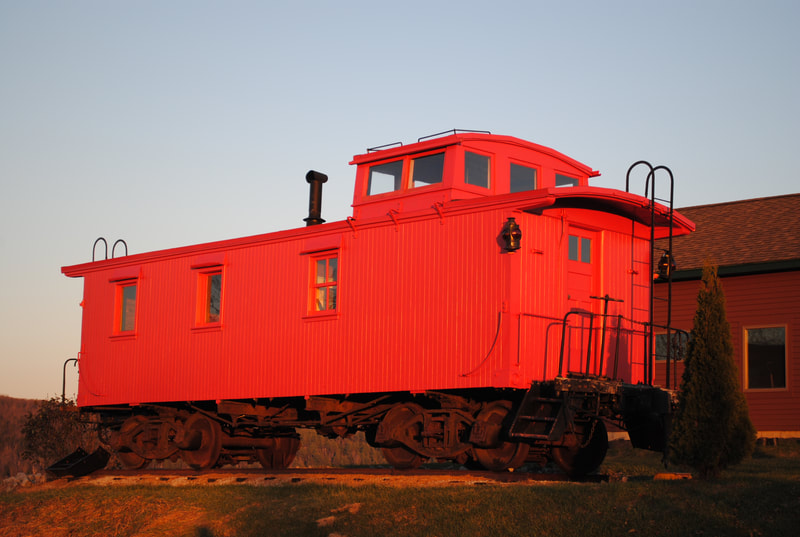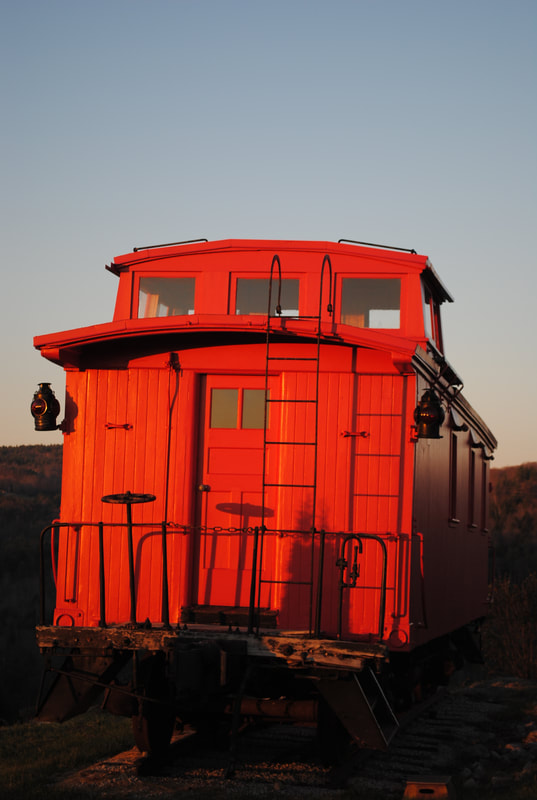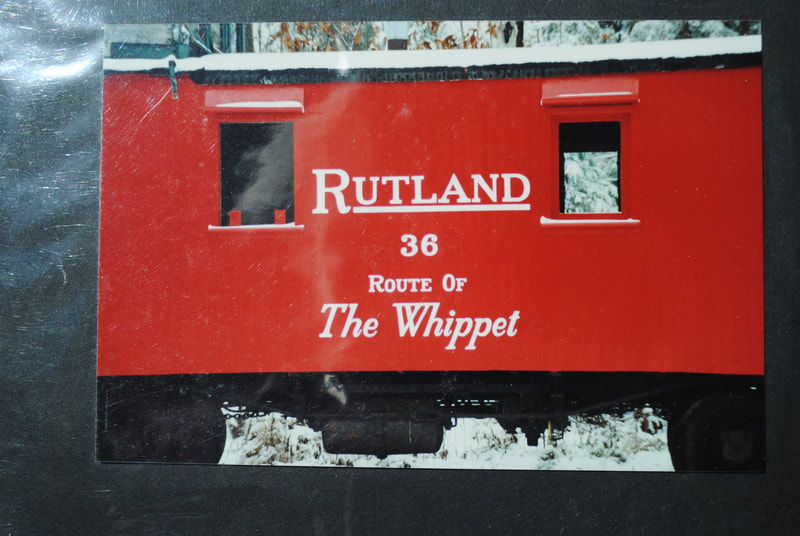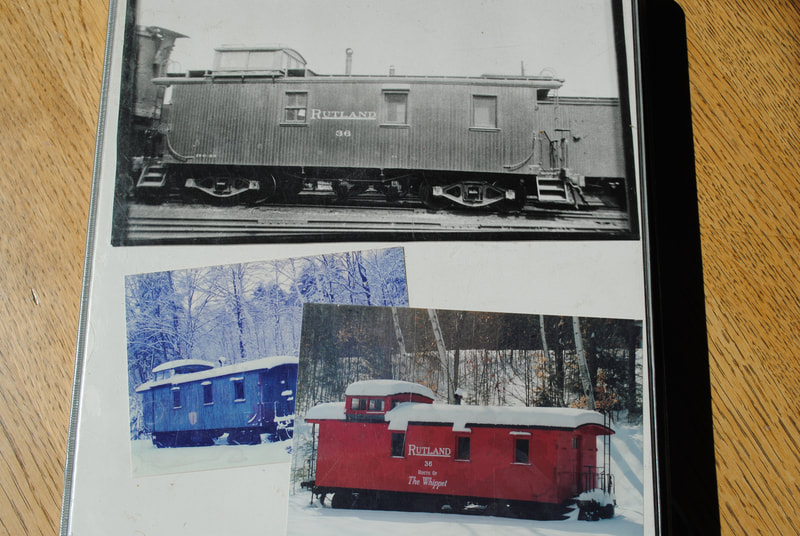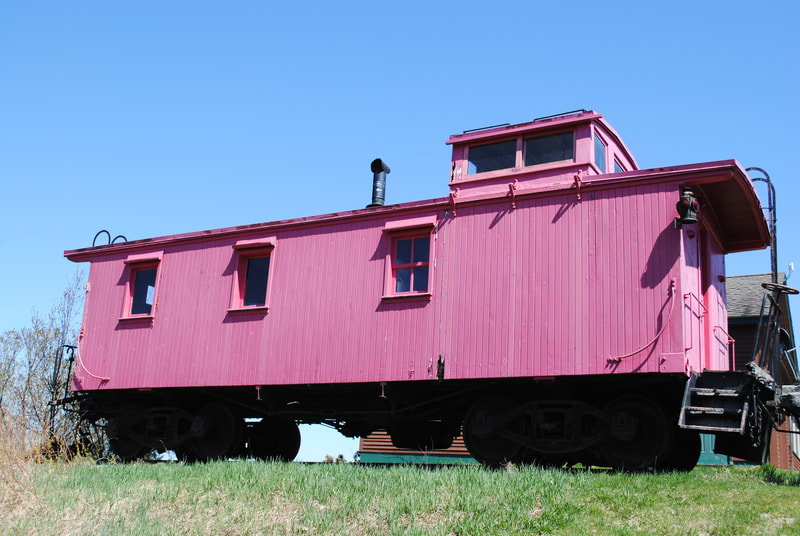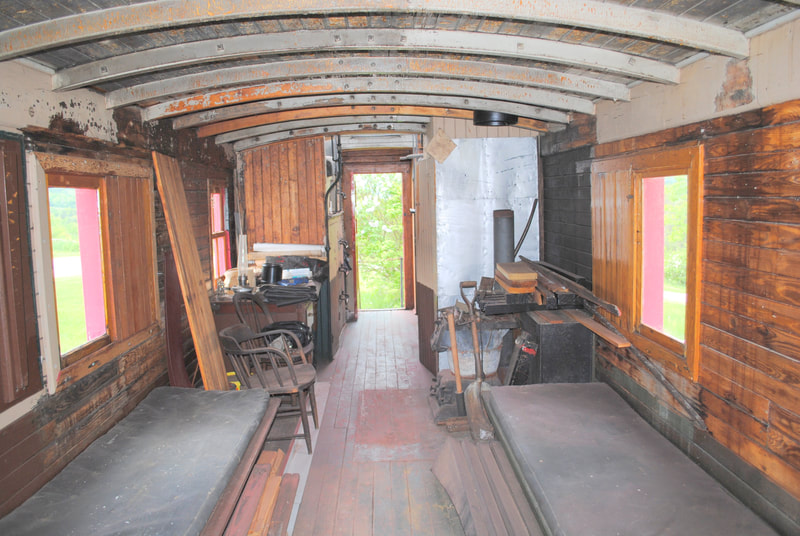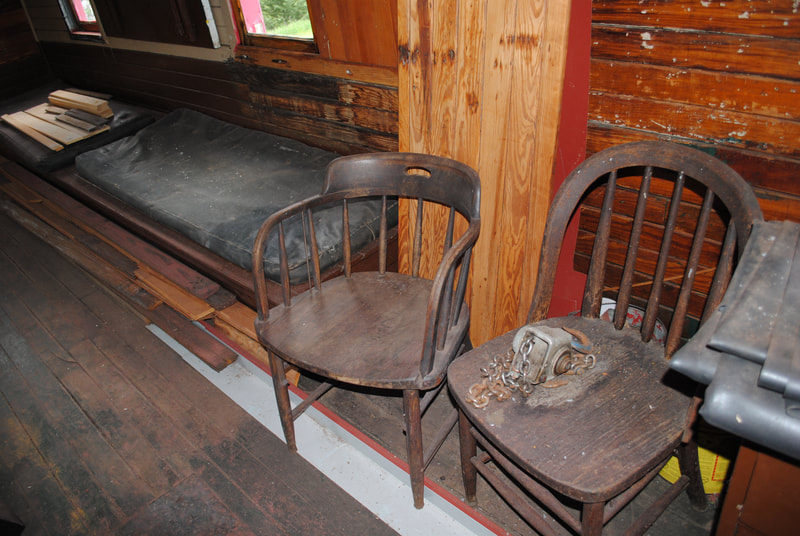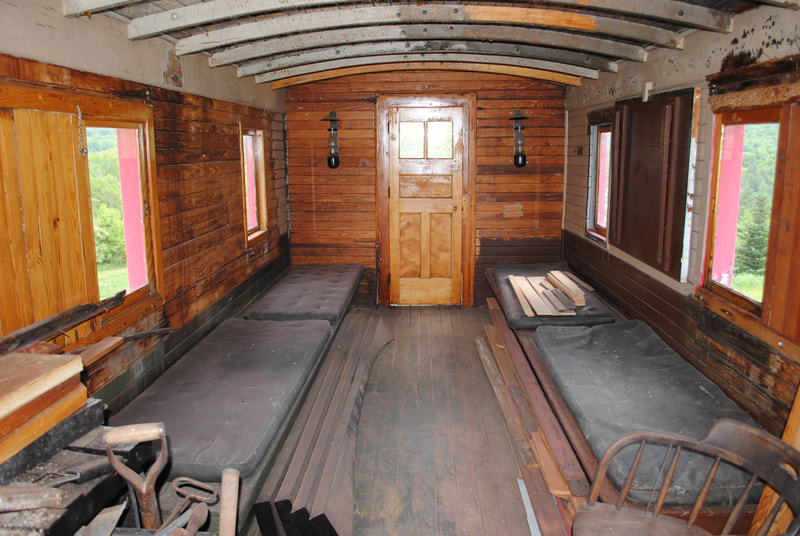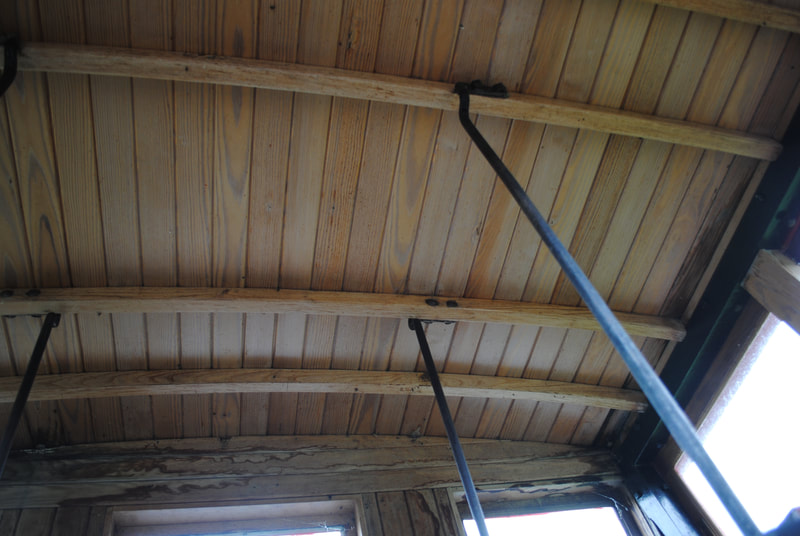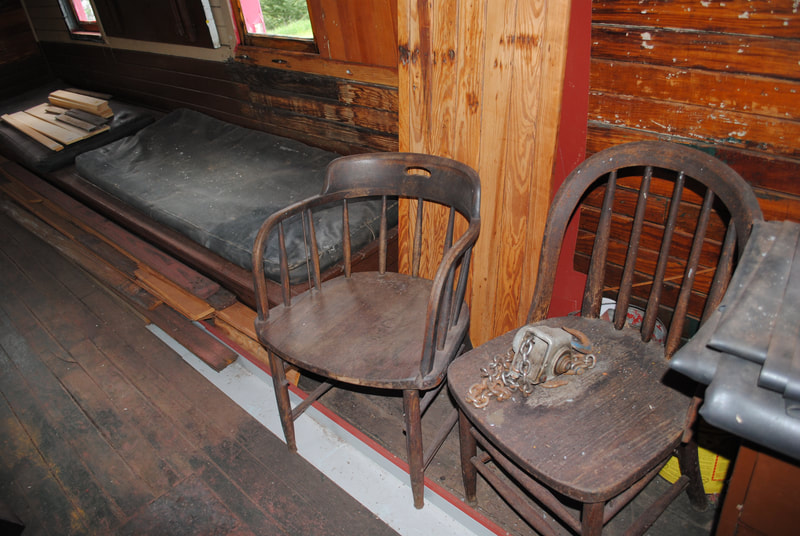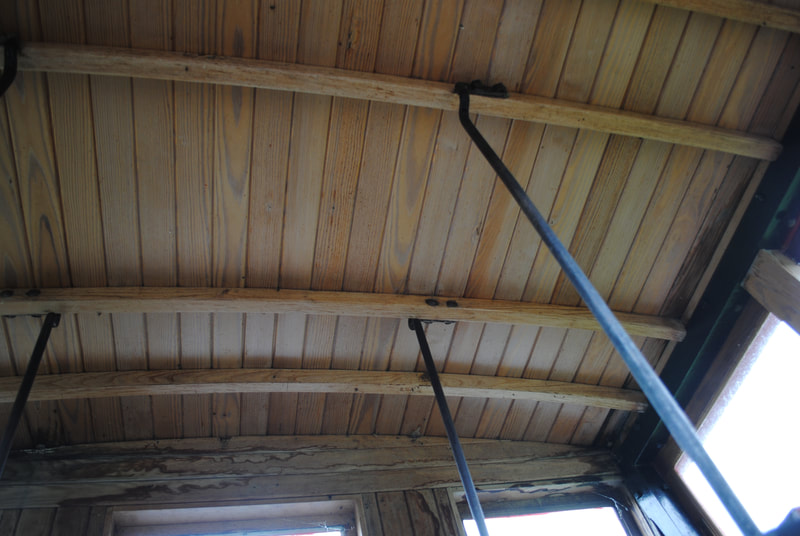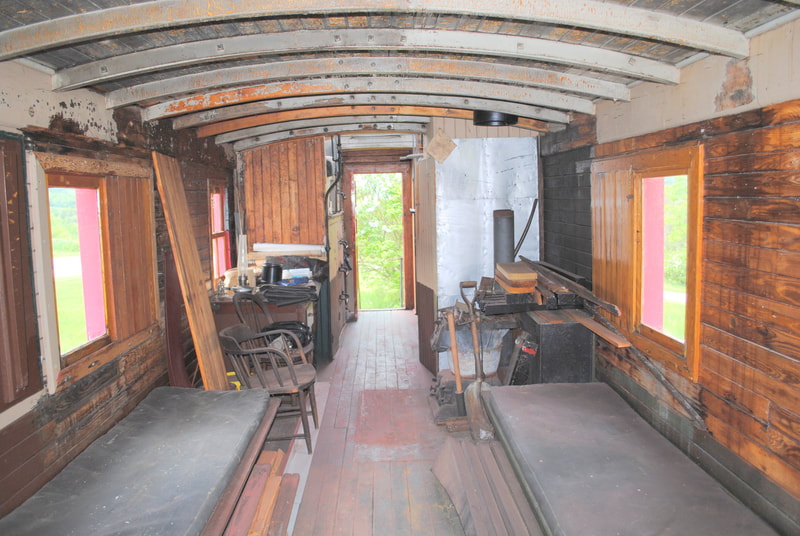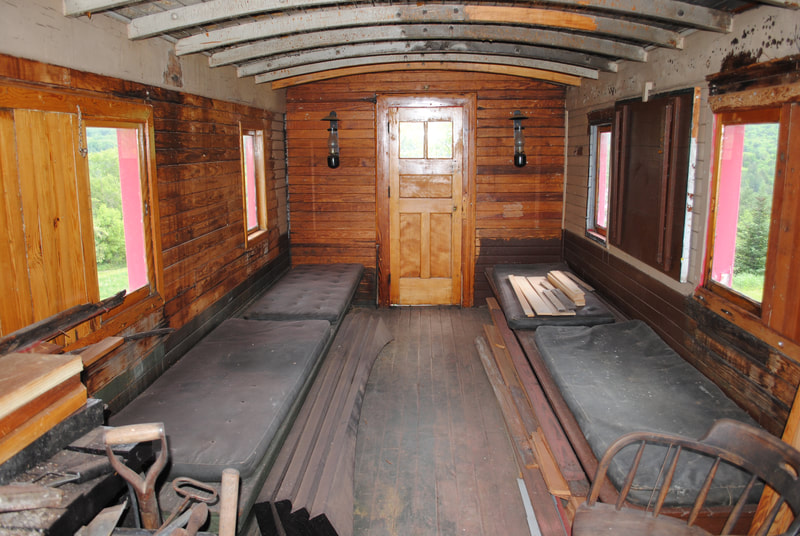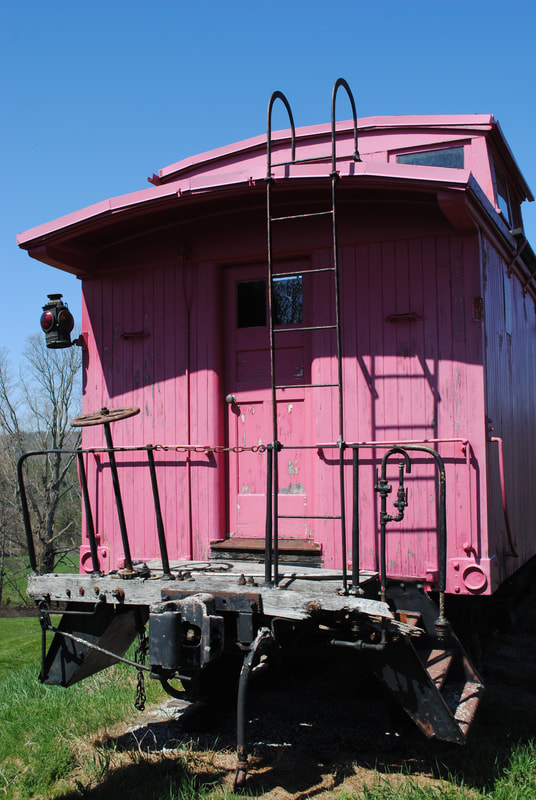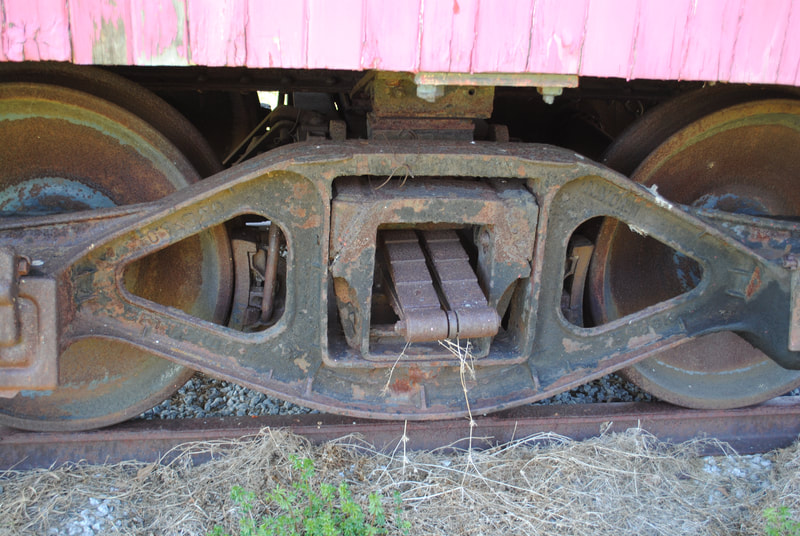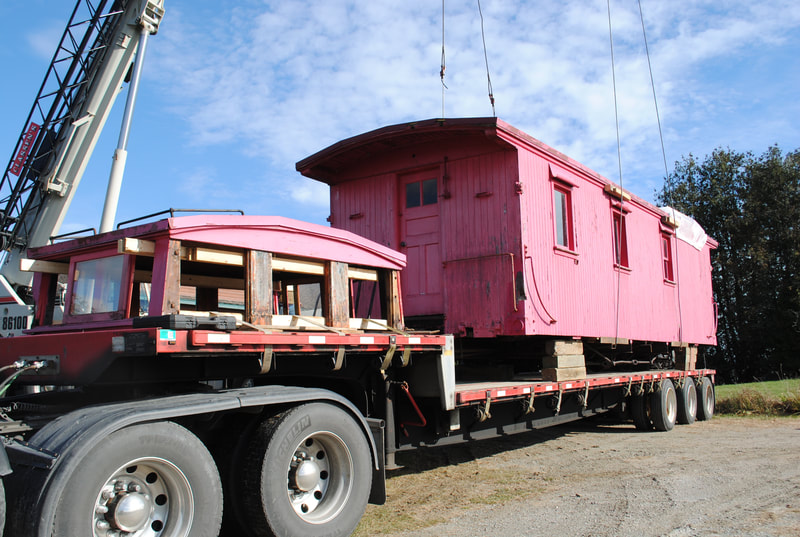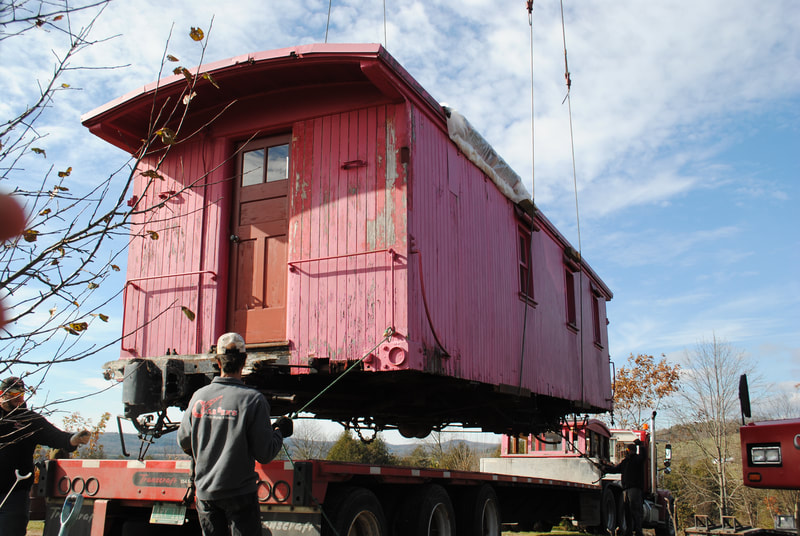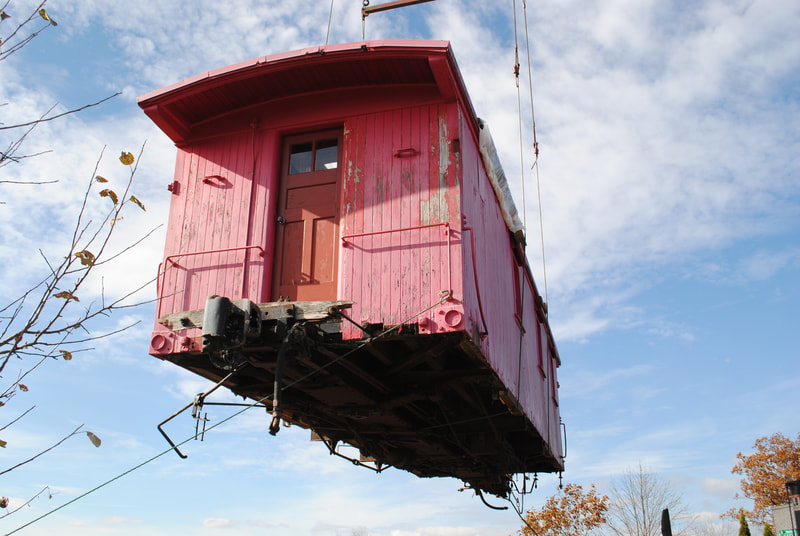Chapter members, Sally and John Cook have sold their vintage, 1920's Rutland, #36, caboose! This is Sally's and John's story! Text and photos from Sally Cook
It was a bright, sunny day when a crane and three trucks pulled up to transport a 1920 former Rutland Railroad caboose to a new home in the Burlington area. It's wheels have run over every bit of former Rutland Railroad tracks from Bellows Falls Vt. to Burlington then north to the islands.
It's been on a hill top in West Barnet for nearly 20 years, before that at as a noted icon in Rockingham on Route 5 as part of the Caboose Corner model train store property, and before that part of Steamtown USA in Bellows Falls and North Walpole.
But, when the big politicians out of Scranton, Pennsylvania came to Bellows Falls to negotiate a deal to move what was claimed to be “The Largest Locomotive Collection” in the world to their city, two reporters put it on the list to save. It became part of the 14 railroad cars that formed the Vermont Historical Railroad.
Oh, there are other cabooses in the state. One in Woodsville brought there by the same Classen Crane Service in Waterford a few years ago. Another empty sister is in East Barnet that used to be part of the Farmer's Daughter in St. Johnsbury on Route 2.
But, this Rutland RR Caboose #36, is believed to be the most complete wooden caboose made in Vermont that is still in Vermont. It still has a working pot belly stove, original storage bunks with horse hair mattresses, cupola seats with padding, 2 old original chairs, an old lamp on the old desk and a companion Rutland Railroad crossing signal with lights.
“My wife and daughter were in Florida on a vacation, and I decided to surf the internet looking at cabooses,” said Chapin Spencer. “I've always wanted a caboose, and there it was right it Vermont. Others I looked at were mostly out west.”
So he and his wife Rebecca wound up making an offer for the Vermont caboose, then with transportation the deal became complicated. As it turned out, the caboose even without its cupola was too tall to fit under railway overpasses on their road so the car was loaded on to a railroad flatbed at Burlington then craned over a fence to a prepared site.
Spencer is the director of Public Works in Burlington and his wife is a carpenter. Both are interested in preserving Vermont history and have restored a one-room school house and a home in Burlington.
It was a bright, sunny day when a crane and three trucks pulled up to transport a 1920 former Rutland Railroad caboose to a new home in the Burlington area. It's wheels have run over every bit of former Rutland Railroad tracks from Bellows Falls Vt. to Burlington then north to the islands.
It's been on a hill top in West Barnet for nearly 20 years, before that at as a noted icon in Rockingham on Route 5 as part of the Caboose Corner model train store property, and before that part of Steamtown USA in Bellows Falls and North Walpole.
But, when the big politicians out of Scranton, Pennsylvania came to Bellows Falls to negotiate a deal to move what was claimed to be “The Largest Locomotive Collection” in the world to their city, two reporters put it on the list to save. It became part of the 14 railroad cars that formed the Vermont Historical Railroad.
Oh, there are other cabooses in the state. One in Woodsville brought there by the same Classen Crane Service in Waterford a few years ago. Another empty sister is in East Barnet that used to be part of the Farmer's Daughter in St. Johnsbury on Route 2.
But, this Rutland RR Caboose #36, is believed to be the most complete wooden caboose made in Vermont that is still in Vermont. It still has a working pot belly stove, original storage bunks with horse hair mattresses, cupola seats with padding, 2 old original chairs, an old lamp on the old desk and a companion Rutland Railroad crossing signal with lights.
“My wife and daughter were in Florida on a vacation, and I decided to surf the internet looking at cabooses,” said Chapin Spencer. “I've always wanted a caboose, and there it was right it Vermont. Others I looked at were mostly out west.”
So he and his wife Rebecca wound up making an offer for the Vermont caboose, then with transportation the deal became complicated. As it turned out, the caboose even without its cupola was too tall to fit under railway overpasses on their road so the car was loaded on to a railroad flatbed at Burlington then craned over a fence to a prepared site.
Spencer is the director of Public Works in Burlington and his wife is a carpenter. Both are interested in preserving Vermont history and have restored a one-room school house and a home in Burlington.
